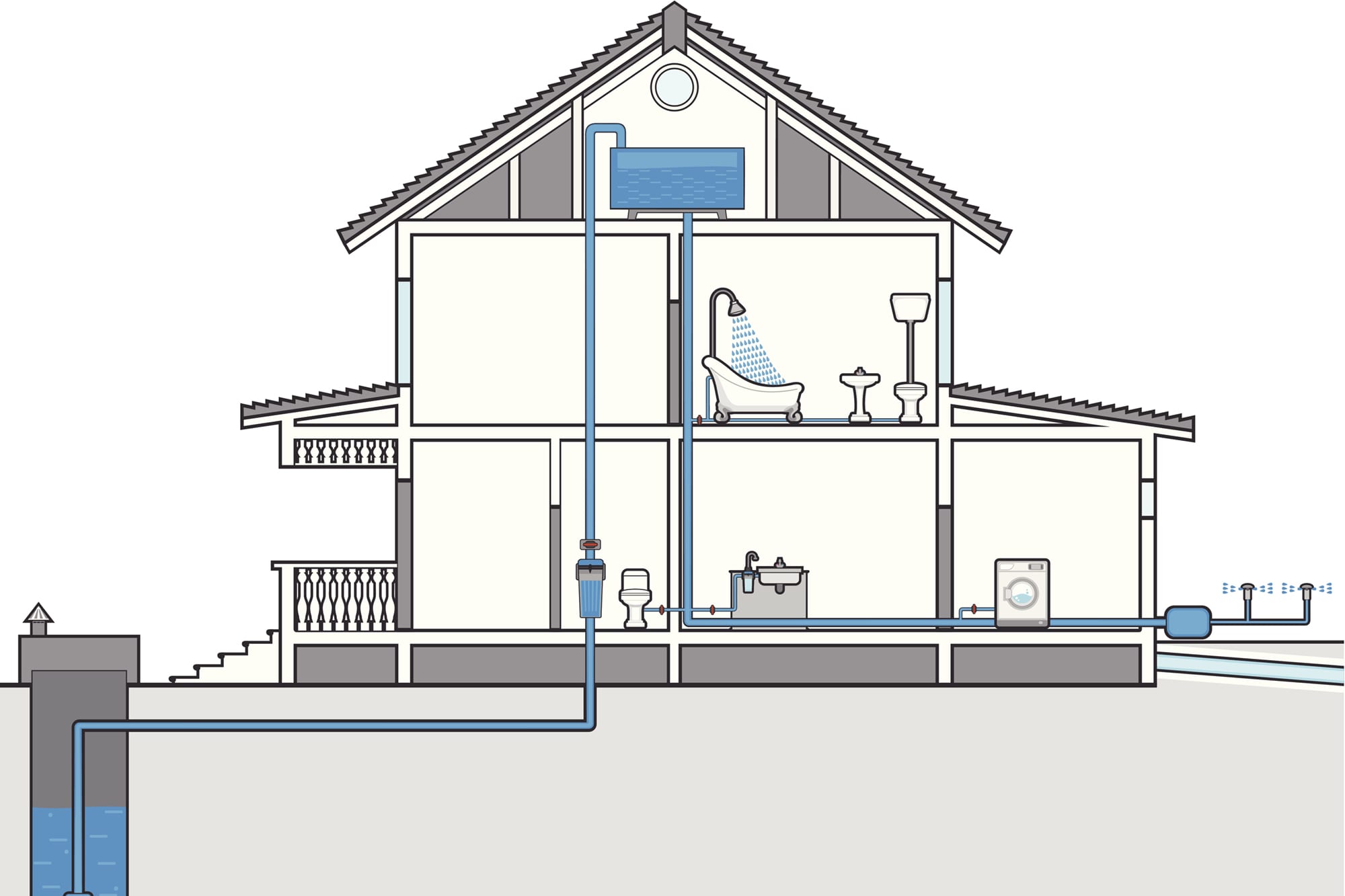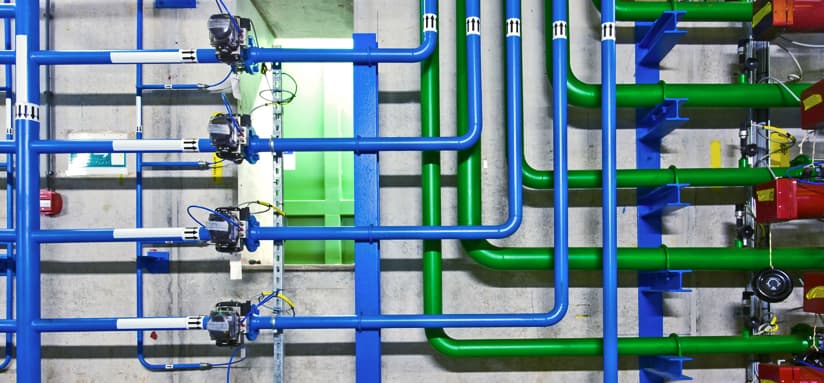The Core Elements of Your House's Plumbing System
The Core Elements of Your House's Plumbing System
Blog Article
This great article listed below in relation to Plumbing Installation 101: All You Need to Know is exceptionally captivating. You should check it out.

Comprehending just how your home's pipes system functions is necessary for every single home owner. From supplying clean water for alcohol consumption, food preparation, and showering to securely eliminating wastewater, a well-kept plumbing system is vital for your household's health and wellness and comfort. In this extensive guide, we'll explore the complex network that comprises your home's plumbing and offer tips on upkeep, upgrades, and taking care of typical problems.
Introduction
Your home's plumbing system is more than just a network of pipes; it's an intricate system that guarantees you have access to clean water and efficient wastewater elimination. Understanding its parts and how they work together can help you protect against pricey fixings and make certain whatever runs smoothly.
Standard Parts of a Plumbing System
Pipelines and Tubes
At the heart of your plumbing system are the pipelines and tubes that bring water throughout your home. These can be made of various materials such as copper, PVC, or PEX, each with its advantages in terms of resilience and cost-effectiveness.
Fixtures: Sinks, Toilets, Showers, and so on.
Fixtures like sinks, bathrooms, showers, and bath tubs are where water is utilized in your home. Recognizing how these components link to the plumbing system aids in detecting issues and preparing upgrades.
Shutoffs and Shut-off Points
Shutoffs control the flow of water in your pipes system. Shut-off shutoffs are essential during emergency situations or when you need to make fixings, enabling you to isolate parts of the system without interfering with water circulation to the whole house.
Water Supply System
Key Water Line
The major water line links your home to the municipal water system or an exclusive well. It's where water enters your home and is distributed to different components.
Water Meter and Pressure Regulator
The water meter measures your water use, while a stress regulator makes sure that water moves at a safe pressure throughout your home's plumbing system, stopping damage to pipelines and components.
Cold Water vs. Warm water Lines
Comprehending the distinction in between cold water lines, which provide water directly from the primary, and warm water lines, which carry warmed water from the water heater, assists in repairing and planning for upgrades.
Drain System
Drain Pipes Piping and Traps
Drain pipes lug wastewater away from sinks, showers, and commodes to the sewer or sewage-disposal tank. Catches prevent sewage system gases from entering your home and additionally catch debris that could trigger clogs.
Ventilation Pipes
Air flow pipelines permit air into the drain system, protecting against suction that could slow down water drainage and create traps to empty. Appropriate air flow is important for preserving the honesty of your pipes system.
Importance of Appropriate Drain
Making sure proper drainage avoids backups and water damage. On a regular basis cleaning up drains pipes and keeping catches can protect against pricey fixings and expand the life of your pipes system.
Water Furnace
Types of Hot Water Heater
Hot water heater can be tankless or typical tank-style. Tankless heating systems warm water as needed, while storage tanks keep heated water for instant use.
How Water Heaters Attach to the Plumbing System
Comprehending how water heaters link to both the cold water supply and warm water circulation lines aids in detecting concerns like inadequate hot water or leaks.
Upkeep Tips for Water Heaters
Consistently purging your water heater to eliminate sediment, examining the temperature level settings, and examining for leakages can prolong its life-span and enhance energy performance.
Typical Plumbing Concerns
Leakages and Their Causes
Leaks can take place because of aging pipelines, loose installations, or high water stress. Attending to leaks immediately avoids water damages and mold development.
Obstructions and Obstructions
Obstructions in drains and commodes are frequently brought on by flushing non-flushable products or a build-up of grease and hair. Making use of drain screens and bearing in mind what goes down your drains can avoid blockages.
Indicators of Plumbing Troubles to Look For
Low tide pressure, sluggish drains, foul odors, or uncommonly high water bills are indications of potential pipes issues that must be resolved quickly.
Pipes Upkeep Tips
Normal Evaluations and Checks
Arrange yearly plumbing assessments to catch problems early. Seek indications of leaks, rust, or mineral build-up in faucets and showerheads.
DIY Upkeep Tasks
Easy tasks like cleansing tap aerators, looking for bathroom leakages utilizing color tablet computers, or insulating revealed pipes in cool climates can protect against significant pipes problems.
When to Call a Specialist Plumber
Know when a pipes issue calls for expert experience. Trying complex repair work without correct knowledge can cause even more damage and greater repair costs.
Upgrading Your Pipes System
Factors for Updating
Updating to water-efficient components or replacing old pipes can boost water quality, minimize water costs, and enhance the worth of your home.
Modern Pipes Technologies and Their Benefits
Discover modern technologies like smart leak detectors, water-saving commodes, and energy-efficient water heaters that can save money and lower environmental effect.
Price Factors To Consider and ROI
Calculate the in advance expenses versus lasting financial savings when considering plumbing upgrades. Numerous upgrades spend for themselves with minimized energy costs and less fixings.
Ecological Influence and Conservation
Water-Saving Components and Devices
Mounting low-flow taps, showerheads, and bathrooms can considerably lower water usage without compromising performance.
Tips for Decreasing Water Use
Straightforward routines like taking care of leaks quickly, taking shorter showers, and running complete lots of washing and meals can conserve water and lower your utility expenses.
Eco-Friendly Pipes Options
Think about sustainable pipes products like bamboo for flooring, which is durable and environmentally friendly, or recycled glass for kitchen counters.
Emergency situation Readiness
Steps to Take Throughout a Plumbing Emergency
Know where your shut-off shutoffs lie and how to turn off the water in case of a burst pipeline or major leak.
Relevance of Having Emergency Situation Get In Touches With Handy
Keep call details for regional plumbings or emergency situation solutions readily offered for quick feedback during a pipes dilemma.
DIY Emergency Situation Fixes (When Suitable).
Short-lived repairs like using air duct tape to patch a dripping pipe or putting a pail under a trickling tap can decrease damage up until a professional plumbing technician shows up.
Verdict.
Comprehending the anatomy of your home's pipes system equips you to preserve it properly, conserving time and money on repair work. By following regular upkeep regimens and staying educated regarding modern pipes innovations, you can ensure your plumbing system runs successfully for years ahead.
Understanding Your Home Plumbing System: A Comprehensive Guide
Plumbing System: The Lifeline of Your Home
At its core, the plumbing system is designed to perform two primary functions: bring fresh water into your home and remove wastewater. The system is a network of pipes, fixtures, and other components that transport water and sewage. Residential plumbing systems include potable water supply lines, drain-waste-vent (DWV) systems, and various plumbing fixtures that make water use in daily tasks possible.
Key Components:
Water Supply: This part of your plumbing system brings municipal water into your home, passing through the main water supply line. It s responsible for supplying all water needs, from drinking to bathing.
Drainage System: It carries waste and water away from your home to the sewer or septic system. This system includes all the piping within your home that leads to external sewage or septic systems.
Vent System: An essential yet often overlooked component, the vent system allows sewer gases to escape and lets air into the drainpipes, ensuring water and waste move correctly through the system.
Fixture: More Than Just Taps and Toilets
Plumbing fixtures are the most interactive parts of the plumbing system, including faucets, showers, toilets, and sinks. Each fixture is connected to the plumbing system and plays a role in either the delivery of freshwater or the disposal of waste and wastewater.
Types of Fixtures:
Faucets and Sinks: Used for washing hands, dishes, and other daily water needs.
Toilets: Dispose of human waste through the sewage system.
Bathtubs and Showers: Provide bathing facilities, requiring both hot and cold water supply.
Water Supply: The Source of Life
The water supply system is a critical component, ensuring that potable water is available throughout your home for various uses, including drinking, cooking, and cleaning. This system consists of pipes that distribute water to different parts of the house, controlled by valves to regulate the water flow.
Types of Plumbing: Materials and Methods
Various types of plumbing systems and materials are used in residential settings, each with its advantages and applications. From copper and PVC pipes for water supply to cast iron and ABS for drainage, the choice of materials can impact the longevity and efficiency of your plumbing system.
https://intownplumbingtx.com/articles/home-plumbing-system-guide/

Understanding Your Home Plumbing System: A Comprehensive Guide
Plumbing System: The Lifeline of Your Home
At its core, the plumbing system is designed to perform two primary functions: bring fresh water into your home and remove wastewater. The system is a network of pipes, fixtures, and other components that transport water and sewage. Residential plumbing systems include potable water supply lines, drain-waste-vent (DWV) systems, and various plumbing fixtures that make water use in daily tasks possible.
Key Components:
Water Supply: This part of your plumbing system brings municipal water into your home, passing through the main water supply line. It s responsible for supplying all water needs, from drinking to bathing.
Drainage System: It carries waste and water away from your home to the sewer or septic system. This system includes all the piping within your home that leads to external sewage or septic systems.
Vent System: An essential yet often overlooked component, the vent system allows sewer gases to escape and lets air into the drainpipes, ensuring water and waste move correctly through the system.
Fixture: More Than Just Taps and Toilets
Plumbing fixtures are the most interactive parts of the plumbing system, including faucets, showers, toilets, and sinks. Each fixture is connected to the plumbing system and plays a role in either the delivery of freshwater or the disposal of waste and wastewater.
Types of Fixtures:
Water Supply: The Source of Life
The water supply system is a critical component, ensuring that potable water is available throughout your home for various uses, including drinking, cooking, and cleaning. This system consists of pipes that distribute water to different parts of the house, controlled by valves to regulate the water flow.
Types of Plumbing: Materials and Methods
Various types of plumbing systems and materials are used in residential settings, each with its advantages and applications. From copper and PVC pipes for water supply to cast iron and ABS for drainage, the choice of materials can impact the longevity and efficiency of your plumbing system.
https://intownplumbingtx.com/articles/home-plumbing-system-guide/
Hopefully you liked our article on Anatomy of a House: Understanding the Components. Thank you for taking a few minutes to read through our blog. Enjoyed reading our article? Please quickly share it. Let others check it out. We love reading our article about Exploring Your Homes Plumbing Anatomy.
Suggested Site Report this page